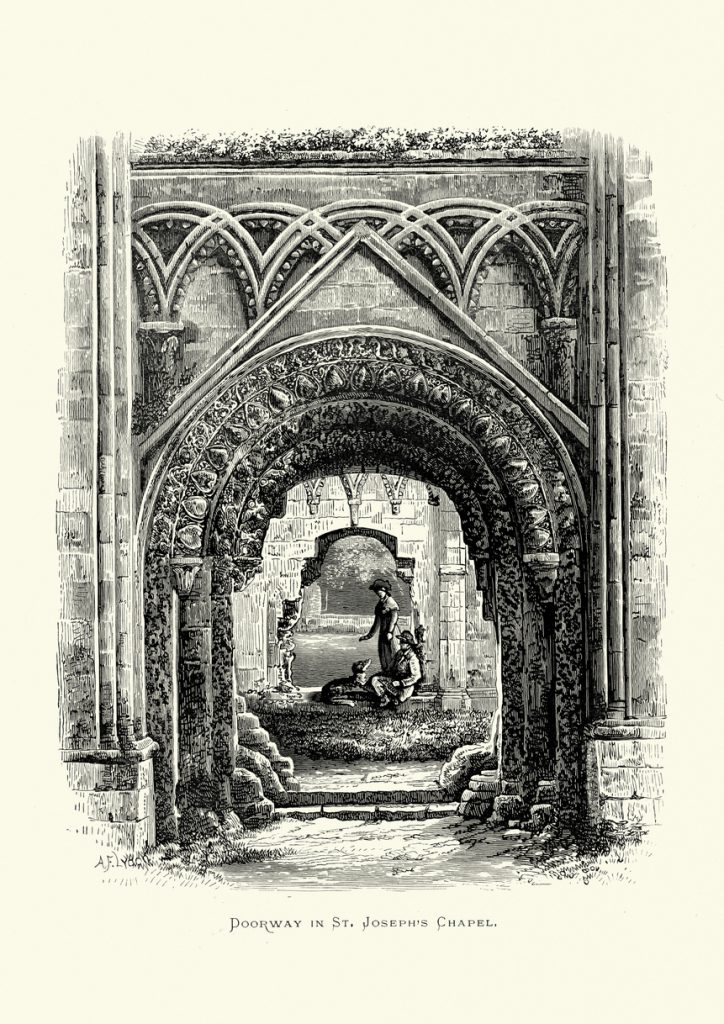John Michell, The New View Over Atlantis, Thames and Hudson, London, 1983.
John Michell’s View Over Atlantis was a ground-breaking work when first published in 1969 and has remained a classic ever since. Its focus is not on a mythological sunken continent beneath the Atlantic. Instead, Michell begins his story with the following account:

“Just after Christmas in 1648 John Aubrey, out hunting with some friends, rode through the Wiltshire village of Avebury and there saw a prehistoric temple, the greatest of its age in Europe, which up to then had remained undiscovered. It was not hidden in some remote and desolate spot, for a thriving village stood within its ramparts, nor at that date was it particularly ruinous. Yet Aubrey was the first of his age to notice it.”
Aubrey’s revelation was the start of a rediscovery of the surviving monuments of megalithic Bronze Age Britain. During the 1920s, Bristol antiquary Alfred Watkins had his own startling epiphany as he rambled through the Herefordshire countryside. As Mitchell recounts:
“On a high hilltop he stopped and… suddenly, in a flash, he saw something which perhaps no one in England had seen for perhaps thousands of years. Watkins saw straight through the surface of the landscape to a layer deposited in some remote prehistoric age. The barrier of time melted and, spread across the countryside, he saw a web of lines linking the holy places and sites of antiquity. Mounds, old stones, crosses and old crossroads, churches placed on pre-Christian sites, legendary trees, moats, and holy wells stood in exact alignments that ran over beacon hills to cairns and mountain peaks. In one moment of transcendental perception Watkins entered a magic world of prehistoric Britain, a world whose very existence had been forgotten.”
Watkins’ son later described that afternoon:
“Then without warning it all happened suddenly. His mind was flooded with a rush of images forming one coherent plan. The scales fell from his eyes and he saw that over many long years of prehistory, all trackways were in straight lines marked out by experts on a sighting system. The whole plan of the Old Straight Track was suddenly revealed.”

What Watkins was perceiving, Mitchell believes, was an enormous invisible “energy grid” spread over the landscape as far as he could see. Mitchell himself had a similarly startling eye-opening atop another hill in Southern Britain in 1966. Experiencing his own insight, the Irish poet A.E. (George Russell) had written, “I knew the Golden Age was all about me, and it was we who had been blind to it, but that it had never passed away from the world.”
Initially scoffed at by his contemporaries, Watkins’ perception, and Russell’s, have in more recent years, been confirmed by investigators in the British countryside again and again. Watkins liked to remind doubters of the Biblical passage from Jeremiah he suspected might be relevant:
“Thus saith the Lord. Stand ye in the ways, and see, and ask for the old paths, where is the good way, and walk therin, and ye shall find rest for your souls…Set up waymarks, make thee high heaps: set thine heart toward the highway (high way?)…Because my people have forgotten me, they have burned incense to vanity, and they have caused them to stumble in their ways from the ancient paths, to walk in paths, in a way not cast up.”
In an academic paper in 1938, a German geographer wrote:
“The sites of holy centers had been located in the remorte past on the lines of great geometrical figures which were themselves constructed in relation to the positions of the heavenly bodies. The regular units of measurement used in this terrestrial geometry were based on simple fractions of the earth’s proportions.”
Human life in Bronze Age Britain, he maintained, had been, “enriched by means of a force activated through the correct geographical relationship of sacred centers.”
Watkins’ friend Foster Ford was the first to suspect that the path of these lines followed natural magnetic currents that flowed beneath and through them. Soon Watkins and Ford were seeing in the landscape spread out before them the arteries of a gigantic web-like “terrestrial nervous system” that was, in turn, connected to the positions of the stars and constellations overhead. In Ireland, these ancient pathways had long been known as “fairie paths.” The later famously arrow-straight Roman roads had often followed these same trajectories. Roman writers recorded coming upon and making use of, this kind of prehistoric “straight tracks” in every country they conquered. The Spanish invaders of Peru encountered them there as well.
The New View Over Atlantis includes an abundance of photographs revealing these paths, centers, and interconnections clearly. In England, they are now also called “ley lines.” Eventually, these now tree-lined, leaf-shaded country lanes became known too as “hollow ways” or “hallowed ways”. Travelers along them “often experienced a strange nurturing tranquility” as if they had become in touch with “some forgotten secret” still alive there. Some, Mitchell writes, sense that they are remnants of a long-ago “golden age of science, poetry, and religion” even though they can perceive only a “fraction of that great mystery, the key to which has been lost.”
Next: Commonwealth: Our Legacy of Places of Power and Transfiguration of the Human Soul